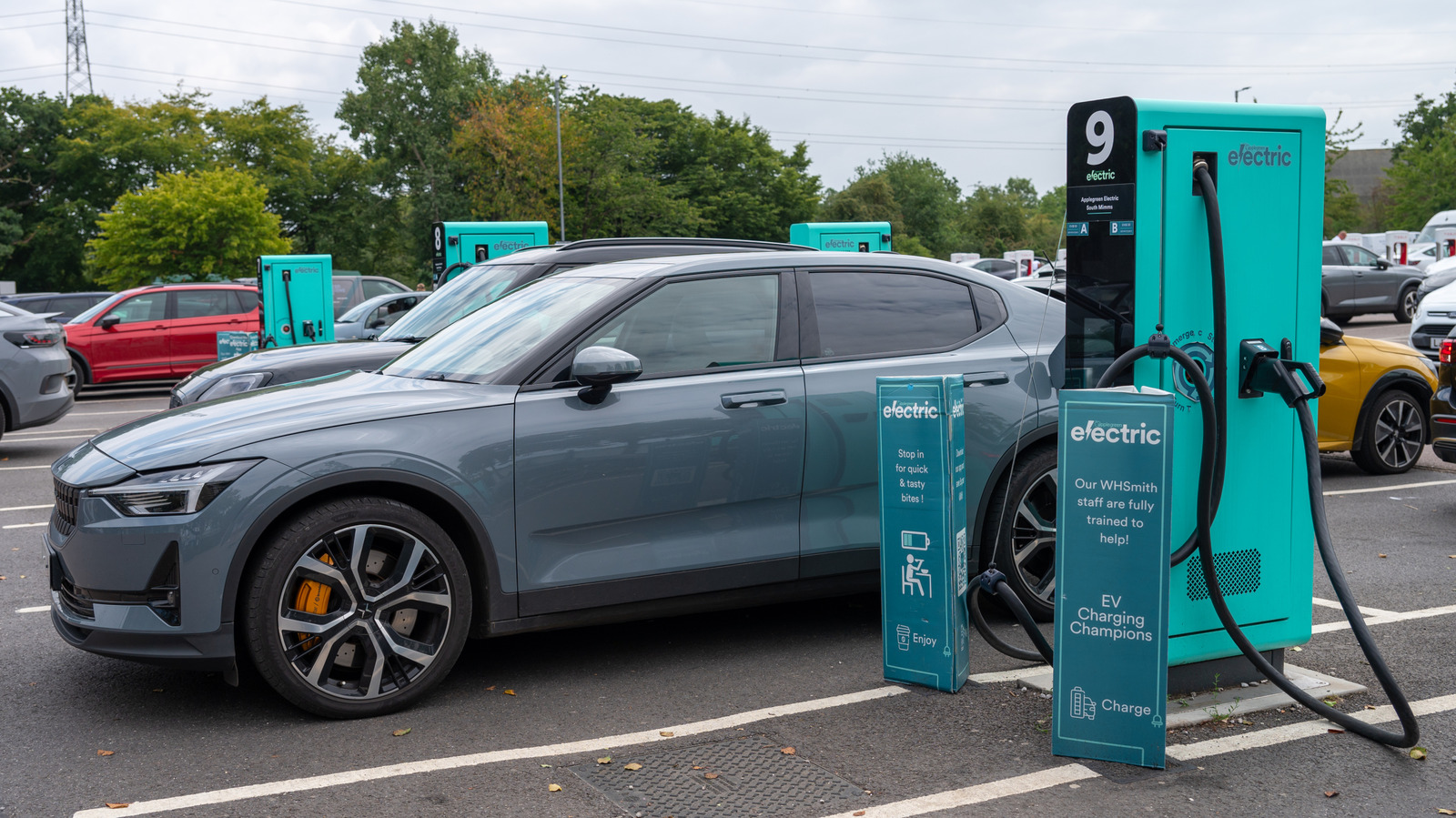Electric cars have come a long way since the late 2000s, when they were nothing but a curious science experiment. Now they are amongst the most popular options for new cars, and for good reason. Most modern EVs can cover long distances, charge faster, and also come with tons of government subsidies, making them cheaper to drive and maintain compared to gas cars.
But, while the future is and always will be electric, the charging infrastructure in many places is still a work in progress. And it can cause headaches. Maybe a charger that was online on your charging app isn’t available during your long trip, or maybe there are cars already lined up at your local fast charger, and you have to drive to the next town. In such cases, squeezing every mile from the battery becomes essential. Here are ten verified ways you can extend the driving range of your electric vehicle.
Drive gently
The instant torque of electric vehicles and the thrill of overtaking can be really addictive. After all, it’s one of the biggest reasons why people switch over from ICE vehicles. However, the harder you accelerate, the faster the battery depletes, and the range decreases. Instead, try adopting a smooth driving style.
That means accelerating gently up to a set cruising speed and maintaining it. For that, engage Cruise Control. It’s a clever system that maintains a set speed for the vehicle without needing any driver input, and it’s much more efficient than humans.
Many EVs also come with a more advanced version called Adaptive Cruise Control, which takes input from the navigation system, traffic conditions, and vehicle sensors to pre-determine what the car should do. For example, if the system detects there’s a hill descent coming, it’ll ease the throttle and let gravity maintain the same speed as before. Or it can start slowing down for a highway exit way before, due to traffic conditions.
Plus, try to drive slowly. Despite EVs being more efficient than gas cars, there is no way around air resistance. And after 50 mph, cars use more energy to punch a hole in the air, instead of pulling their own weight. So, if the speed limit is 75 mph, try driving at 65 mph to extend the range.
Use regen braking
EV motors convert the electrical energy stored in lithium-ion cells into kinetic energy to move the vehicle. This is a super-efficient process that doesn’t produce waste products, such as heat and noise. Regenerative braking, or regen, works by reversing this process. In deceleration, the vehicle’s kinetic energy is converted into electrical energy using the motor.
In simple terms, when you lift off the throttle when driving and touch the brakes, the regen system takes over instead of the brake pads. It then generates electricity, recharges the battery, and helps the car stop. With this process, electric vehicles can recapture up to 70% of the energy that would have otherwise been wasted.
In addition, new EVs come with different levels of regenerative braking, with the most effective one for city roads being One Pedal Driving. This system essentially replaces the brakes altogether. Instead, when the driver lifts off the throttle, the electric motors operate in reverse to capture the most energy, which mimics braking and helps the car come to a normal stop.
Try lift and coast
If your EV doesn’t have regen braking or it’s not really effective, there is another way to save some charge, i.e., lift and coast. It’s a term known by most Formula 1 fans, and refers to a driving technique where you lift off the throttle pedal way before the braking point, and let the rolling motion of the car take you along.
While this driving technique isn’t really practical for city or suburban driving due to traffic constraints, it’s actually more efficient than regenerative braking, as there is no energy loss, as in the conversion of kinetic energy to electrical energy. It’s smart to use a combination of both regen and coasting. Simply, turn off regenerative braking or put it on the lowest level when driving on highways, and toggle it to the maximum in cities or stop-and-go traffic. This combination will help you maximize the range.
Use eco mode
All new EVs come with several driving modes that tweak the performance based on different driving and road conditions. One of them is eco, and it can be your best friend when you can’t find a charger. When enabled, the eco (or economical) mode limits certain functions of the electric vehicle to save energy. Depending on your manufacturer, a car may limit its peak performance, change climate control options, smooth throttle response, or limit quick speed changes.
In practice, the impact of using eco mode will ultimately depend on your specific vehicle. While some cars may see a significant improvement in range, others might not. So, it’s a good idea to test the range in both normal and eco modes and then compare the results. This will help you get a rough idea of the increased driving range to expect if the need for eco mode ever arises.
Inflate tires properly
Tires are a really important part of any vehicle, as they’re in contact with the road below. Consequently, tires experience friction, and if they aren’t properly inflated, it substantially increases energy consumption. While the decrease in the driving range of electric vehicles hasn’t been studied yet, the U.S. Department of Energy found that under-inflated tires lower the gas mileage by about 0.2% for every one psi drop. So, check if your tires are at the recommended pressure, the value of which can be found on the inside of the driver’s door jamb. New electric vehicles also display tire pressure in the instrument cluster, making it easier to check.
The type of tires also plays a big role, because while EV and ICE car tires may look the same, they are designed for different purposes. Electric vehicles need special tires to withstand the increased battery weight and the instant torque, all while being aerodynamically efficient for the best range and lowest cabin noise.
Remove excessive weight and roof racks
All EV makers try to design the most aerodynamic shape possible, so that a car punches the smallest hole in the air and experiences the least drag. This directly contributes to a longer driving range. However, accessories like roof racks disturb this delicate balance and introduce up to 15% more drag. The result is an inefficient car, which has to use more of its battery power to maintain the same speed as before. So, it’s wise to remove any roof racks to extend the driving range of your electric vehicle.
Another thing you should do is shed excess weight. It sounds really simple, but the less weight you carry around every day, the more range you’ll get. For most people, there’s lots of scope to declutter their car from waste, and beyond that you can also remove any body kits you may have installed.
Precondition the cabin
Unlike gas cars, which direct the engine heat into the cabin during winter, EVs don’t produce excess heat. Consequently, all your heating comes from the battery, which draws more power than any other component and reduces the driving range. Thankfully, most new EVs have an accompanying app that enables users to control specific metrics. And that’s exactly where preconditioning the cabin comes in.
If you charge at home and leave for work at a set time every day, then pre-heat the cabin before going out. The grid electricity will directly power the heater, and it won’t use any of your precious charge. Then, when you leave, you’ll have a nice, toasty car with a full charge. Similarly, when you’re in the car alone, it’s better to use the heated/cooled seat feature instead of turning on the climate control. This technique not only helps you feel better, but also doesn’t waste energy on changing the climate of the whole cabin.
Don’t open windows
Rolling the windows down and feeling the breeze on a sunny day is one of the top ten best feelings in the world. And if your electric vehicle doesn’t have much charge, it may seem like a good way to keep your range instead of using the air conditioning. Unfortunately, it’s not. Opening the windows in certain vehicles can increase energy consumption by up to 20%. This can be attributed to the increased air resistance as the car now has to use more energy to maintain the same speed.
However, there are some exceptions. This phenomenon isn’t applicable when driving at lower speeds, due to less wind resistance. Plus, the type and shape of your EV will also affect the result. As a general rule of thumb, if you’re driving in the city and under 50 mph, keeping the windows down will save more battery than using the air con. But, on highways, it’s wise to keep the windows up and turn the cool air on.
Plan your journey
Planning a long journey with an EV is quite different from driving a gas car, all thanks to the number of charging stops one might need to make. Fortunately, apps like Waze maintain a database of all public charging stations, and also let users filter chargers based on their specific EV and its fast-charging capabilities. Sometimes, it’s not about going through the quickest route, but instead about carefully planning each stop to avoid problems.
Plus, take a look at the elevation changes of different routes, as hills cause the battery to drain faster. If you’re planning a long trip with your EV for the first time, don’t rely on the company-quoted range figures, as they are measured in the most ideal scenarios. Owners of EVs like the Tesla Cybertruck can expect up to 20% less range than what the company advertises. Also, check the weather before heading out, as EV batteries drain faster in certain conditions. This happens because the chemicals stored in lithium-ion cells are sensitive to temperature changes, and cold weather slows everything down. In practice, your range can drop by up to 20% in freezing conditions.
Service your EV regularly
EVs have far fewer moving components than traditional cars, meaning you don’t need to change engine oil or top up the coolant every few months. However, electric vehicles still require maintenance on components like brakes and tires, which need to be checked regularly, along with the liquid cooling system. This system, which is typically a mixture of water and ethylene glycol, prevents the battery and motor from overheating and throttling the performance.
During an inspection, a technician checks for battery fault codes, which help resolve any issues with energy deployment, and installs the latest software updates. While these updates aren’t always essential, they might include bug fixes that can improve the range of your electric vehicle. Beyond the basics, carmakers also recommend having a high-voltage battery inspection done periodically. It’s a comprehensive test that checks the battery’s operating temperatures, its health and degradation levels, and the insulation.









